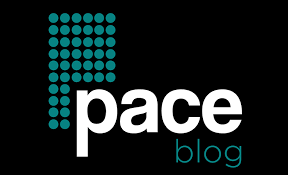Data management plays a role in the operations of organizations, including government entities. It not only aids in making decisions but also improves the delivery of services to the public. Government systems must incorporate data management solutions to keep up with the digital era’s demands. This article delves into the advantages of merging data management solutions with government systems and discusses possible obstacles. So, read on and gain valuable insights from experts. These insights will empower you to make informed decisions.

Benefits of Incorporating Data Management Solutions into Government Systems
1. Enhanced Data Quality
The integration of data management solutions in government systems can notably enhance data accuracy and quality. Through automated procedures for collecting and validating data, the likelihood of errors stemming from input or duplication is minimized. As a result, decision-makers have complete access to information when government data management is carried out well.
2. Improved Efficiency and Productivity
Integrating data management solutions with government systems allows for process automation, leading to enhanced efficiency and productivity. Tasks like data entry, record keeping, and reporting can be streamlined, allowing employees to concentrate on other tasks. Additionally, swift access to information facilitates responses to inquiries or requests from citizens.
3. Taking a Comprehensive Look at Data
Governments possess an array of data collected from departments or agencies. By implementing data management solutions, they can gain a perspective on this pool of information by linking different databases or sources in real-time. This integration allows for in-depth analysis, resulting in insights, identification of trends, and informed decision-making.
4. Enhanced Security Measures
The protection of citizen information within government systems is a concern. Integrating data management solutions ensures that advanced security measures are implemented and regularly updated to defend against cyber threats or unauthorized access attempts. Encryption protocols and user authentication mechanisms safeguard citizen privacy while upholding the system’s integrity.
Challenges in Integrating Data Management Solutions with Government Systems
Although integrating data management solutions with government systems offers advantages, the process has hurdles. It is essential to understand these obstacles and take measures to tackle them.
1. Legacy Systems Compatibility
Numerous government systems rely on outdated software and hardware infrastructure that may not easily align with modern data management solutions. Achieving seamless integration necessitates evaluating and considering system compatibility, potentially requiring updates or enhancements to the existing infrastructure.
2. Data Governance and Compliance
Government entities frequently encounter data governance and compliance obligations because of the nature of the citizen data they manage. When incorporating data management solutions, adhering to frameworks concerning data privacy, security, and sharing is crucial. This may entail enforcing access controls, anonymizing or de-identifying personally identifiable information (PII), and establishing guidelines for data sharing.
3. User Adoption and Training
Introducing data management tools into government systems necessitates a transition in processes, workflows, and user interfaces. Employee adoption can pose a challenge if staff members must be adequately trained and familiar with the systems. Effective communication channels and comprehensive training initiatives help alleviate resistance to change and ensure integration.
4. Data Silos
Government bodies often function in isolated units where departments or agencies independently maintain their databases or systems. Integrating these datasets demands planning, cooperation, and interoperability among systems that may vary in structures, formats, or standards.

5. Improved Data Collaboration and Interoperability
Integrating data management solutions with government systems can facilitate improved collaboration and interoperability between departments or agencies. Breaking down data silos enables government entities to access and exchange information more seamlessly. This helps with coordination, allows for an understanding of what citizens require, and minimizes unnecessary repetition of tasks.
Conclusion
Merging data management solutions with government systems is crucial for updating how the public sector operates while ensuring that services are delivered efficiently to citizens. The advantages of enhanced data accuracy, increased efficiency and productivity, holistic perspectives on information, and improved security measures are extremely valuable for governments aiming to make informed decisions in this age.

